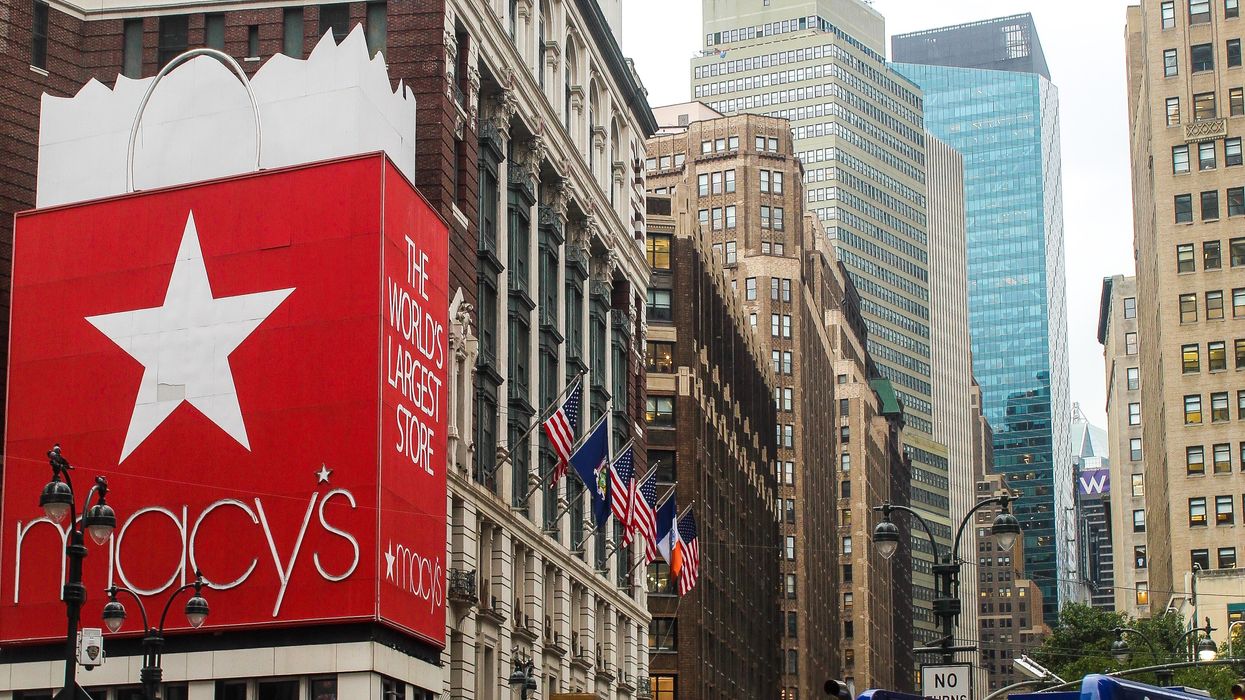Macroeconomic changes tend to come in waves. The question is which side of the break you’re on. Sometimes, the wave lifts you up. Other times, you’re just trying to ride it safely down, and avoid crashing.
Over the last two years, ecommerce rode the full swell.
In 2020, the pandemic-prompted stay-at-home orders led people a record rise in online shopping as people sought goods that were increasingly becoming scarce. As the calendar turned to 2021, this boom was buoyed by stimulus funds and continued curtailing of travel and in-person events. But as the year wore on, supply chain snarls started to reveal that there was a limit to the demand. The imbalance of available goods and people who wanted them was among the prime contributors to a bout of 40-year-high inflation in 2022. Coupled with a return of in-person shopping, the ecommerce wave came back down to its pre-2020 trajectory.
“2020 was the big scale-up. 2021 was kind of a crest, and then we’ve now seen a new plateau form in 2022,” Vijay Ramachandran, Pitney Bowes VP of market strategy for global ecommerce, told The Current, adding that ecommerce this year is “scaling down to a degree to revert to the mean.”
While no longer surging, it will continue to gather steam and rise gradually. Data shows that people are continuing to build ecommerce into their habits. According to recent results of Pitney Bowes’ BOXpoll, 59% of consumers – including 74% of Gen Z and 67% of millennials – plan to buy more online in the next six months.

US ecommerce sales as an overall share of retail sales. (Source: US Commerce Department)
With inflation at 40-year highs and a glut of inventory crowding some stores, Pitney Bowes’ data is detecting an uptick in ecommerce intent. One reason is that the holidays are around the corner, so shopping in general is set to get busier.
Yet it also illustrates how we're entering a different era in shopping and consumer behavior. The continuing economic waves are not affecting everyone in consumer goods – or even all of ecommerce – in the same way.
Inflation is a prime example. According to the US Labor Department’s Consumer Price Index, the inflation rate for the overall economy stood at 8.5% in July. Yet, according to the Adobe Digital Price Index, ecommerce prices entered deflation in July.
That’s because inflation isn’t uniform across every consumer category, Ramachandran said. The jump in the Consumer Price Index is largely driven by big spikes in the price of gas, groceries and materials for construction and home improvement. These categories are feeling the brunt of supply chain chaos and geopolitical strife stemming from the invasion of Ukraine.
However, as the price for staples has been going up, the categories that are sold online have been increasing more moderately. For instance, gasoline prices were up 44% year-over-year in July, according to the CPI. Scroll down to apparel, which is sold through both online and in-store channels, and you’ll find that prices rose a more modest 5.1% in that category.
Move to the online data, and the overall prices are actually going down. Apparel saw a 1% year-over-year decrease through ecommerce channels, according to the Adobe DPI. Electronics, another popular ecommerce category, had a 9.3% year-over-year decrease, while online toy prices fell 8.2%.
“The old adage is that the future is already here, it’s just not evenly distributed. You can say the same thing about inflation. Inflation is here but it’s not evenly distributed,” Ramachandran said. “...It’s not evenly applied across these product categories, and that makes a big difference because the product categories that we buy online are very different from the products we often buy in-store.”
Bucking the trend was food, where prices were up 13.4%, mirroring the overall economic spike. While food prices are notoriously more susceptible to global economic shocks, this remains an area to watch, especially considering how grocery ecommerce is a lone area where the pull-forward of the pandemic has stuck.

US retail sales: Ecommerce and in-store. (Source: US Commerce Department)
A divergence is also playing out when it comes to inventory, where the other big macroeconomic story currently shaping retail is playing out. Large retailers like Target, Walmart and Gap Inc. reported a glut of inventory this spring that was mismatched to demand. This was another outgrowth of supply chain issues. When shipping lanes were clogged and tankers were stuck off the coast of California, these companies took matters into their own hands. They chartered boats and arranged flights to obtain the items that would enable them to meet the demand of seasons and trends. But with continued delays, the inventory didn’t arrive until it was too late. Consumers no longer wanted casual wear and new TVs that they sought while staying at home. Instead, they wanted an updated wardrobe and beauty products as they went back to the office, started eating out again and went on vacation.
However, DTC brands and midrange retailers that sell online didn’t face many of these problems. That's because they largely didn’t have the means to arrange workarounds to supply chain issues, so they didn’t over-order as a result. Plus, the electronics, cosmetics, personal care items and specialty home goods that they sell also tend to be less tied to seasons, so the inventory that was sitting on a ship for weeks was still sellable by the time it reached them. If anything, the issue is that larger retailers are now heavily discounting items, so staying competitive on price is getting tougher.
“You don’t have too much product, but you can’t get rid of it because your competitors are really aggressive on pricing,” Ramachandran said. “Now the pressure is not on inventory, the pressure is on pricing for the middle tier of retailers.”
This underscores an important point about how shopping is evolving as these macro swings filter through the economy. During the pandemic spring of 2020, consumers sought ecommerce because that was the only way to find many goods. As that period moves further into the rearview mirror, they will have more choice. To be sure, shopping will still be mediated through the digital realm in a big way via mobile phone. But increasingly, whether to buy online or in-store will become a matter of preference.
Shopping isn’t going back to the way it was. The motivation for buying online changed drastically from 2019 to 2020, as nice-to-have became necessity. It continued to evolve over the next two years as consumers went from being able to get items they needed for safety to seeing out-of-stock messages. With the return of more in-store activity, it is changing again.

Reasons for in-store vs. ecommerce. (Source: Pitney Bowes BOXpoll)
For those seeking a glimpse of how these shifts are playing out as we head into the holidays, a BOXpoll survey that Pitney Bowes conducted for the 2022 back-to-school season offers hints. The survey asked consumers who were shopping online and in-store why they chose these channels, offering options including price, selection, convenience and speed. In the results, price and selection were fairly evenly matched. Yet the ability to quickly grab an item off the shelf still mattered.
“The difference is that online is more convenient, while the store is faster. That’s why consumers are picking one channel over the other,” Ramachandran said. When it comes to ecommerce, “What does convenient mean if it doesn’t mean faster, it doesn’t mean more selection and it doesn’t mean I’ve got better prices online? What’s left over is that you can shop from anywhere, at any time.”
Untethering shopping to place sets up a host of possible buyer journeys. A shopper may see an item on social media and decide to buy it, or scroll through Amazon while waiting to pick up children from practice. There is also more crossover between realms. They may see a DTC brand’s item in a store, then get out their phone to scope out the brand’s story and values, and see what else it sells in the meantime.
This “ubiquitous commerce,” Ramachandran said, is increasingly common, and he thinks it is where shopping is going. And while consumer expectations of the availability of two-day shipping have ratcheted up thanks to Prime and other services, this doesn’t necessarily mean that shoppers must receive all items instantly. Ecommerce often leads to a discretionary purchase that comes out of want, and not need. It is the buying that happens in the moment, but not necessarily the delivery.
“What we’re finding is that it’s not that you’re in a hurry to go get a product, it’s that the inspiration to go buy something could happen at any time,” Ramachandran said.
To be sure, ecommerce is not completely free from the limits of location, no matter how many devices we eventually have. A physical item still has to be able to reach a shopper, and this is where it becomes important to make a distinction that not all of ecommerce is affected by economic change in the same way. Creating those inspirational buying opportunities and getting products to shoppers in a reasonable amount of time are different tasks. Yet both are necessary to succeed.
“Ecommerce is at the intersection of atoms and bits. When you’re selling online, that’s the world of bits and it scales infinitely well. It scales up and it scales down perfectly fine,” Ramachandran said. “The world of atoms, where Pitney and our industry lives in logistics – it doesn’t scale in the same way. It’s very difficult to scale up and it’s also very difficult to scale down.”
Now that we are in a period of scale-down, logistics and delivery get harder. Forecasting demand is more of a moving target amid continued uncertainty. On the delivery side, fast shipping is predicated on moving items close to consumers, but regionalizing inventory is difficult, and has only grown more complex after a period in which many people moved further from city centers. Meeting shoppers where they are will also get trickier when they are everywhere. As shown by the higher numbers of Gen Z and millennial shoppers who plan to turn to ecommerce in the next six months, tougher economic times will lead shoppers to face down decisions. They may have to choose whether to get in the car and go to the store or stay home to save on gas, and whether to buy an item at all if it is not on sale.
As the waves start to recede, it will be revealing, recalling a famous Warren Buffet quote about tides and swimwear.
“The flood came in and now the tide is starting to go out, and you’re starting to see who had strong scalability in their networks and their logistics,” Ramachandran said. “Does it scale down as well as it scaled up, or was there a lot of duct tape and bailing wire putting that together?”













